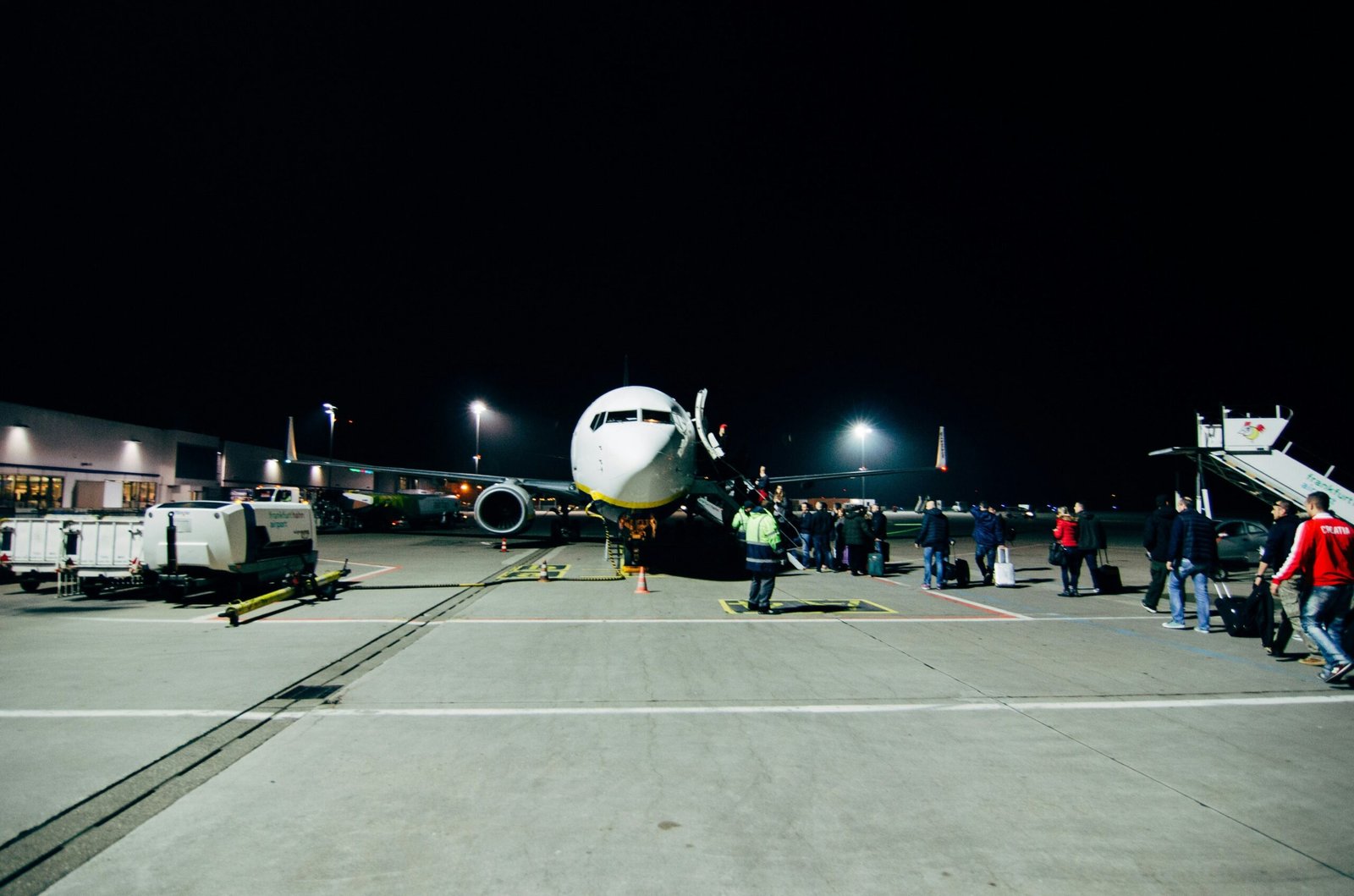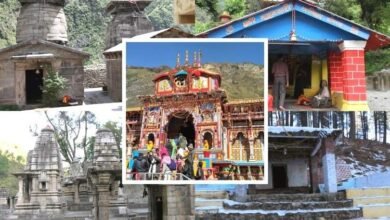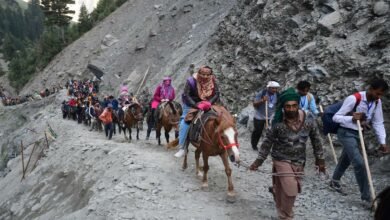Exploring Meghalaya: The Abode of Clouds and Its Pristine Beauty

“`html
Meghalaya, located in the northeastern region of India, is often referred to as the “Abode of Clouds” due to its extraordinary weather patterns and scenic landscapes. This picturesque state is renowned for its dramatic monsoon season, with clouds frequently enveloping its undulating hills, creating a mystical aura that attracts numerous visitors each year. The capital city of Shillong, also known as the “Scotland of the East,” serves as the cultural and administrative heart of Meghalaya.
The topography of Meghalaya is predominantly hilly, with lush greenery, numerous waterfalls, and an extensive network of caves contributing to its natural allure. This diverse landscape supports a rich biodiversity, making it a haven for nature enthusiasts and researchers alike. Furthermore, the state is home to a mosaic of indigenous tribes, each with its own unique customs, languages, and traditions. The Khasi, Jaintia, and Garo tribes make up the majority of the population, and their vibrant festivals, music, and dance forms are central to Meghalaya’s cultural heritage.
Shillong, perched at an altitude of 1,525 meters above sea level, is a bustling hub that encapsulates the essence of Meghalaya. The city is dotted with colonial-era architecture, bustling markets, and serene lakes, offering a blend of the old and the new. The Shillong Peak, Ward’s Lake, and the iconic Elephant Falls are among the most popular tourist attractions in the area.
Meghalaya’s pristine beauty extends beyond its physical landscapes to its people and their way of life. The harmonious coexistence of different tribes, each contributing to a rich tapestry of cultural practices, is a testament to the state’s social inclusivity and unity. The relentless efforts to preserve its natural resources and cultural heritage have made Meghalaya a model of sustainable living and an exemplary destination for eco-tourism.
Why Visit Meghalaya?
Meghalaya, often referred to as the “Abode of Clouds,” offers an array of compelling reasons for travelers to explore this enchanting state. First and foremost, its breathtaking hills stand out as one of the primary attractions. Rolling landscapes and lush greenery create a picturesque backdrop that feels almost otherworldly. The mist-covered hills contribute to a serene and tranquil atmosphere, making it a perfect retreat for nature lovers.
The waterfalls in Meghalaya are another significant draw. They are not just waterfalls; they are spectacles of nature’s artistry. Iconic falls like Nohkalikai, the tallest plunge waterfall in India, and the enchanting Seven Sisters Falls are awe-inspiring sights that provide exceptional opportunities for photography and relaxation. The cool, refreshing spray from these majestic falls is a rejuvenating experience, especially during the warmer months.
Meghalaya’s caves also hold a special allure for those eager to delve into the mystical underworld. Places like Siju Cave, one of the longest and most intricate caves in Asia, and Mawsmai Cave offer exploratory adventures into the dark, winding passageways adorned with incredible stalactites and stalagmites formations. These caves provide not only thrill but also a profound appreciation for the geological wonders hidden beneath the earth’s surface.
Another unique feature of Meghalaya is its living root bridges. These extraordinary structures, meticulously woven from the aerial roots of rubber trees, are both functional and extraordinary feats of bioengineering. The double-decker root bridges of Cherrapunji are particularly famous, providing both a practical crossing and a fascinating glimpse into the harmonious relationship the local Khasi and Jaintia tribes maintain with their natural environment.
The region’s climate further enhances its appeal. With the monsoon ensuring lush landscapes and the winter offering crisp, cool weather, Meghalaya presents an ideal environment for year-round tourism. This natural bounty is complemented by the rich cultural experiences awaiting visitors. Local cuisine, with its unique blend of flavors, offers a gastronomical journey that is both memorable and satisfying. Additionally, the many festivals, such as Shad Suk Mynsiem and Nongkrem Dance, provide vibrant and immersive windows into the state’s traditions and ways of life.
In essence, Meghalaya’s combination of natural beauty, temperate climate, and cultural richness makes it a must-visit destination for travelers seeking both adventure and tranquility.
Top Tourist Attractions in Meghalaya
Meghalaya, often called the Abode of Clouds, is home to numerous mesmerizing destinations that captivate travelers with their pristine beauty and unique charm. One such marvel is the Elephanta Falls, named for its resemblance to the shape of an elephant. This captivating three-tiered waterfall, located near the state capital Shillong, is particularly enchanting during the monsoon season, with the water cascading down in full force making it a must-visit site.
Another gem of Meghalaya is Mawlynnong, renowned as the cleanest village in Asia. This picturesque village offers travelers a chance to experience the serene and immaculate environment reflecting the locals’ dedication to cleanliness. The village’s natural beauty is complemented by its organized flora and the distinctive bamboo skywalk that provides breathtaking views of the surrounding landscapes.
The Double Decker Living Root Bridge in Cherrapunji is a testament to the ingenuity of the Khasi tribe. Constructed entirely from the roots of rubber trees, this bridge exemplifies sustainable and resilient architecture, having been used for over a century. A trek to this living bridge offers not only an adventure but also a unique insight into an intersection of natural wonders and human innovation.
Lastly, the serene Umiam Lake, located in Nongpoh, is often compared to Scotland’s scenic lakes. It serves as a significant attraction with its expansive azure water body framed by lush green hills, providing opportunities for water sports, boating, and tranquil picnics by the lakeside. The lake is a photographer’s paradise at sunrise and sunset when the sky mirrors hues of pink and orange over the calm waters.
These attractions are just a glimpse into what Meghalaya offers, each with its unique allure that solidifies the state’s reputation as one of India’s most breathtaking destinations.
Traveling to Cherrapunji
Cherrapunji, a picturesque town nestled in the heart of Meghalaya, is renowned for its lush greenery and stunning waterfalls. Reaching Cherrapunji is an adventure in itself, offering multiple travel options tailored to different preferences and starting points. For air travelers, the nearest airport is Shillong Airport (also known as Umroi Airport), located approximately 80 kilometers away. However, since this airport handles limited flights primarily from Kolkata, many visitors prefer landing at Lokpriya Gopinath Bordoloi International Airport in Guwahati, approximately 163 kilometers away, which has better connectivity with major Indian cities.
Upon arrival in either Shillong or Guwahati, travelers can opt for a scenic drive to Cherrapunji. From Shillong, a journey by road takes about 2.5 hours through rolling hills and lush forests, ideal for those eager to soak in Meghalaya’s natural beauty. Regular shared taxis and private cabs are available from Shillong to Cherrapunji, offering convenient and personalized travel.
For those considering train travel, the closest railway station is Guwahati Railway Station, situated about 148 kilometers from Cherrapunji. Guwahati is well-connected with numerous trains from all over India. From Guwahati Railway Station, the journey to Cherrapunji involves a combination of taxi or bus. Private taxis from Guwahati provide a comfortable option, while state-managed Assam State Transport Corporation (ASTC) and Meghalaya Transport Corporation (MTC) buses offer an economical yet slightly longer journey.
Traveling by road provides a direct and rewarding experience, especially for those coming from nearby cities. National Highway 40 connects Guwahati to Shillong, and from there, the Shillong-Cherrapunji Road (State Highway 5) leads you to the heart of Cherrapunji. The well-maintained road and breathtaking scenery en route make driving to Cherrapunji a memorable experience.
Cherrapunji is accessible throughout the year, but the monsoon season from June to September, when the region exhibits an array of waterfalls and lush landscapes at their peak, is particularly enchanting. Regardless of the chosen travel route, the journey to Cherrapunji is as remarkable as the destination, ensuring travelers are greeted with the pristine beauty Meghalaya is known for.
What to See and Do in Cherrapunji
Cherrapunji, nestled in the heart of Meghalaya, offers an array of attractions that highlight the region’s pristine beauty and unique cultural heritage. One of the most prominent sites is Nohkalikai Falls, India’s tallest plunge waterfall. Plunging from a height of 1,115 feet, the falls create a spectacular sight, especially during the monsoons when they are at their fullest. For those who love picturesque landscapes, the viewpoint provides a breathtaking panorama of the cascading water surrounded by lush greenery.
Another must-visit attraction is the Mawsmai Cave, a natural limestone cave that stretches over 150 meters. Easily accessible and partially lighted, it offers visitors a chance to marvel at stunning stalactites and stalagmites formations inside. The experience of navigating through its narrow passages and chambers is exhilarating, making it a highlight for adventure seekers. Mawsmai Cave provides a glimpse into the subterranean wonders of Meghalaya.
The Seven Sisters Falls, also known as Nohsngithiang Falls, is another spectacular sight in Cherrapunji. This waterfall, segmented into seven streams, cascades over the limestone cliffs, creating an awe-inspiring scene. It is especially impressive during the rainy season when the falls are in full flow. The surrounding viewpoints offer a panoramic vista of the verdant valley and the cascading torrents.
One of the unique attractions of Cherrapunji is the living root bridges. These bridges are crafted by training the aerial roots of the Ficus elastica tree to grow along a framework of bamboo or other wood. Over time, the roots thicken to form a bridge strong enough to walk on. The double-decker living root bridge in Nongriat village is particularly famous and is often included in trekking itineraries, providing an extraordinary experience of nature’s engineering marvels.
Activities in Cherrapunji are not only centered around sightseeing but also include adventurous pursuits. Enthusiasts can embark on various trekking trails that lead through dense forests, past waterfalls, and across living root bridges. Additionally, exploring the caves offers an adventurous delve into the subterranean world. For a cultural immersion, sampling the local Khasi cuisine, which includes dishes like jadoh (rice and meat) and tungrymbai (fermented soybean), offers a rich gastronomic experience.
Overall, Cherrapunji stands as a testament to the unparalleled beauty and cultural richness of Meghalaya. The blend of natural wonders and adventurous activities makes it a compelling destination for travelers seeking both serenity and excitement.
Best Time to Visit Meghalaya
The optimal time to explore Meghalaya, often referred to as the “Abode of Clouds,” hinges greatly on what travelers wish to experience. This northeastern gem showcases distinct weather patterns across its three main seasons—summer, monsoon, and winter—each bringing its own unique charm.
Summer in Meghalaya extends from April to June. During this period, temperatures remain pleasant, generally varying between 15°C and 25°C, making it an excellent time for sightseeing and exploring the lush landscapes. The summer season is particularly perfect for visiting popular tourist spots like Shillong Peak, Elephant Falls, and the Living Root Bridges in Cherrapunji. The clear skies and cool breezes also provide ideal conditions for outdoor activities such as trekking and hiking.
From July to September, Meghalaya experiences its monsoon season, renowned for heavy rainfall. Famous regions like Cherrapunji and Mawsynram see some of the highest rainfalls in the world. While the monsoon transforms the region into a verdant, vibrant paradise, certain areas may become difficult to traverse due to landslides and swollen rivers. However, for those captivated by waterfalls in full flow and lush greenery, this season offers unmatched scenic beauty.
Winter, spanning from October to March, is widely regarded as the best time to visit Meghalaya. During winter, temperatures fluctuate between 4°C and 16°C. The climate is ideal for enjoying outdoor activities such as trekking and caving. This period also coincides with several key festivals such as the Wangala Festival of the Garos and the Nongkrem Dance Festival of the Khasis, offering a unique cultural insight into the region.
In essence, while summer and winter present the best conditions for sightseeing and participating in various outdoor activities, those enthralled by the dramatic monsoon landscapes may find the rainy season intriguing despite its challenges. Appropriate planning, coupled with an understanding of the seasonal variations, ensures that visitors can enjoy Meghalaya’s pristine beauty to the fullest, regardless of when they choose to visit.
Meghalaya, often referred to as the Abode of Clouds, is not only known for its breathtaking landscapes but also for its rich cultural heritage. The state is home to three major indigenous tribes—the Khasi, Jaintia, and Garo—each with its distinct customs, traditions, and social structures. These tribes contribute significantly to Meghalaya’s cultural mosaic, offering a glimpse into the state’s vibrant ethos.
The Khasi Tribe
The Khasi tribe is an integral part of Meghalaya’s cultural fabric. Known for their elaborate festivals, the Khasis celebrate Nongkrem and Shad Suk Mynsiem with great fervor. These festivals are marked by traditional dances, where men and women, clad in dhara (traditional dress) and jainsem (a draped garment), perform synchronized movements to the rhythms of drums and bamboo flutes. Khasi music, often centered around folk tales and legends, features the use of traditional instruments such as the bom (drum) and duitara (a stringed instrument).
The Jaintia Tribe
The Jaintia tribe shares several cultural similarities with the Khasis but has its unique traditions. Post-harvest celebrations like Behdienkhlam, a four-day festival, are particularly noteworthy. During Behdienkhlam, young men carry wooden logs, known as ‘rots,’ and dance in the streets, seeking blessings for protection against disease and misfortune. Traditional Jaintia attire includes the rich brocade work of the jainsem and the dhara, adorned with gold and silver jewellery, adding to the visual grandeur.
The Garo Tribe
The Garo tribe, predominantly residing in the western regions of Meghalaya, is renowned for celebrating the Wangala festival, a post-harvest thanksgiving ritual. Wangala features a dance known as ‘Dore Kala,’ a synchronized group performance honoring the Sun God. The Garos also wear traditional costumes such as the dakmanda (a draped lower garment) and the gando (shawl), complemented by ornamental beadwork.
Matrilineal Society
Among the unique aspects of Meghalaya’s indigenous tribes is their matrilineal society. In this social structure, lineage and inheritance are traced through the mother’s line. Women, particularly the youngest daughters, inherit family property and bear the responsibility of caring for their elderly parents. This system underscores the significant role women play in Meghalaya’s societal framework, contributing to the cultural dynamics of the state.
Meghalaya’s cultural wealth is a mosaic of vibrant traditions, festivals, and social practices, embodying the essence of its indigenous tribes. Whether through the joyous celebrations, the resonant music, or the colorful attire, the cultural heritage of Meghalaya provides a rich tapestry that continues to thrive amidst the modernizing world.
Travel Tips for Visiting Meghalaya
When planning a trip to Meghalaya, one of the first considerations should be local transport. The state primarily relies on shared taxis and buses for intrastate travel, making it relatively easy for tourists to navigate. For more remote areas, renting a private vehicle can be a more practical option, offering the flexibility to explore Meghalaya’s beautiful landscape at your own pace.
Accommodation options in Meghalaya range from budget-friendly hostels to luxurious resorts. In Shillong, the state’s capital, numerous hotels cater to various preferences and budgets. In smaller towns like Cherrapunji and Mawlynnong, homestays provide an authentic experience, allowing visitors to connect with the local culture more intimately.
Safety is paramount when traveling, and Meghalaya is generally considered a safe destination. However, it is always good practice to remain vigilant, especially in secluded areas. It’s advisable to carry a copy of important documents and inform someone about your travel itinerary. Also, mobile networks can be spotty in remote locations, so having offline maps and crucial contact numbers handy is beneficial.
To enjoy your trip comfortably, packing essential items is crucial. Rainfall is frequent in Meghalaya, often unanticipated, making a good rain jacket or umbrella indispensable. Sturdy, waterproof footwear is recommended for trekking and exploring the region’s natural attractions. Don’t forget to carry a basic medical kit, including any personal medication, insect repellent, and sun protection products.
Respecting local customs enriches your travel experience. Meghalaya has a rich cultural heritage, with matrilineal societies being prominent. Always ask for permission before photographing people, especially in rural areas. Participating in local festivals and trying regional cuisines fosters a deeper connection with the place and its people.
Being environmentally conscious is equally important. Meghalaya’s pristine beauty relies heavily on its well-preserved ecosystem. Adopting practices such as carrying reusable water bottles, avoiding plastic, and disposing of waste responsibly helps in maintaining its natural allure. Engaging with local eco-friendly initiatives can further contribute to sustainable tourism in the region.








